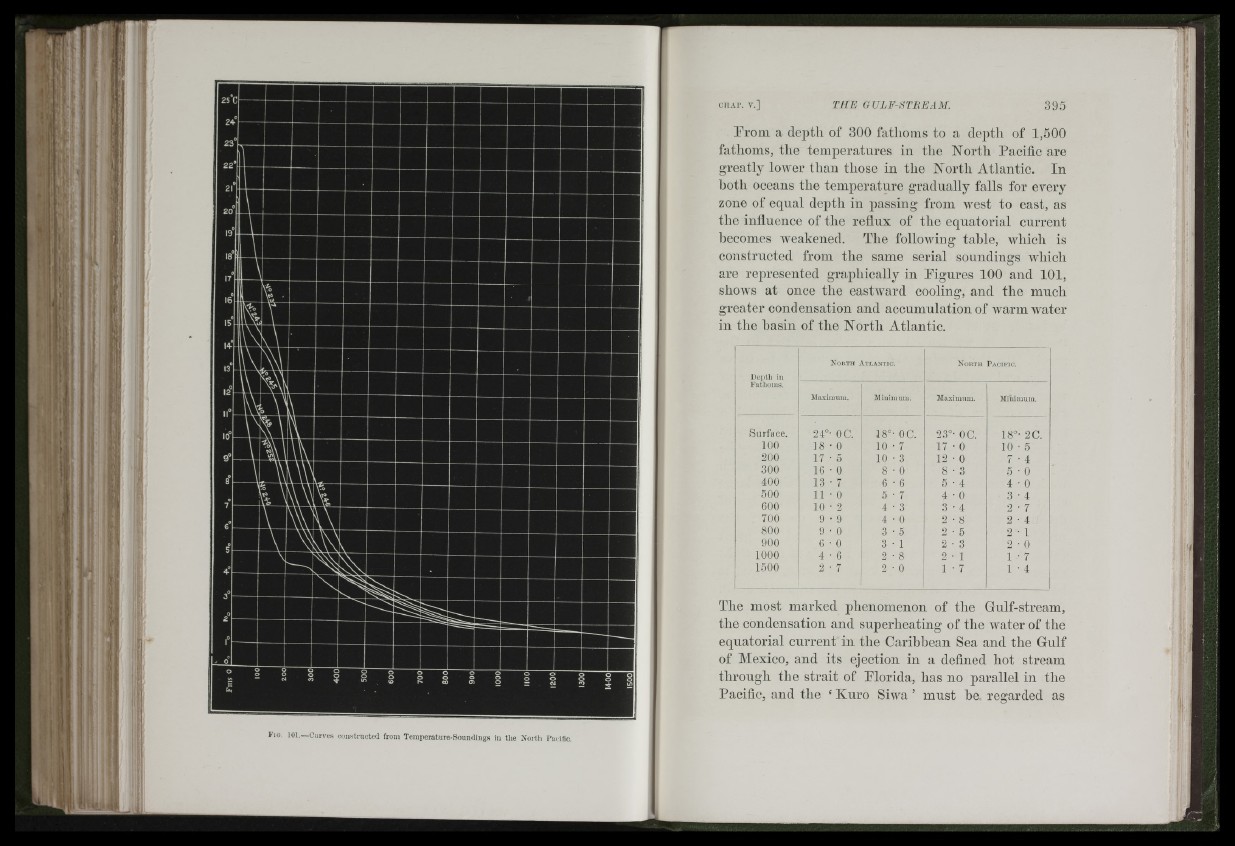
I I I
Ì
i : K i g . 101.—Cu rv es c o n s tru c te d from T em p e ra tu re -S o u n d iiig s in th e N o rtli Pin ific.
From a deiitli of 300 fathoms to a depth of 1,500
fathoms, the temperatures in the North Pacific are
greatly lower than those in the North Atlantic. In
both oceans the temperature gradually falls for every
zone of equal depth in passing from west to east, as
the influence of the reflux of the equatorial current
becomes AA'eakened. The folloAving tahle, which is
constructed from the same serial soundings which
are represented graphically in Figures 100 and 101,
shows at once the eastward cooling, and the much
greater condensation and accumulation of warm water
in the basin of the North Atlantic.
Deiith in
Nokth Atl.vntic. North Pacific.
Fathoms.
Maximum. Miniiiumi. Maximum. Minimum.
Surface. 24° • OC. 18°- OC. 23°' OC. 18°- 2C.
100 18 ■ 0 10 • 7 17 • 0 10 • 5
200 17 • 5 10 • 3 12 • 0 7 • 4
300 16 • 0 8 • 0 8 • 3 5 • 0
400 13 • 7 6 • G 5 • 4 4 • 0
500 11 • 0 5 • 7 4 • 0 3 • 4
600 10 • 2 4 • 3 3 • 4 2 ■ 7
700 9 • 9 4 • 0 2 • 8 2 • 4
800 9 • 0 3 • 5 2 • 5 2 ■ 1
900 G • 0 3 • 1 2 • 3 2 • 0
1000 4 • 6 2 ■ 8 2 • 1 1 • 7
1500 2 ■ 7 2 • 0 1 • 7 1 • 4
The most marked phenomenon of the Gulf-stream,
the condensation and superheating of the water of the
equatorial current in the Caribbean Sea and the Gulf
of Mexico, and its ejection in a defined hot stream
through the strait of Florida, has no parallel in the
Pacific, and the ‘ Kuro Siwa ’ must be regarded as
/, l!,
. I